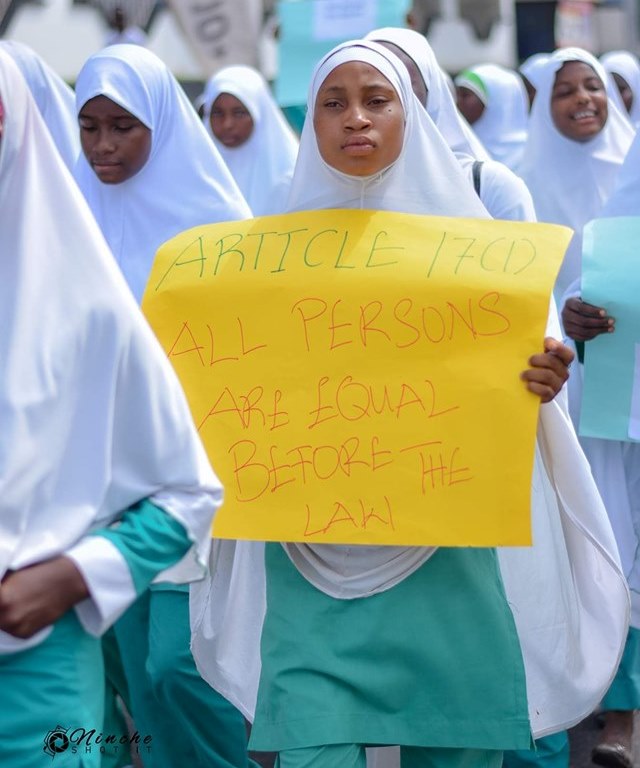|
Getting your Trinity Audio player ready...
|
The hijab – a head covering, mostly worn in public by some Muslim women – is an identity which must not be compromised, young Muslims in Ghana have declared.
Over the years, the peaceful West African country has recorded cases of heads of institutions, especially in the education sector clashing with female Muslims in the Hijab.
Some were stopped from entering examination halls because invigilators believed wearing the innocuous Hijab violates the rules. Some have even been forced to quit their jobs over the Hijab rancor with bosses at the work place.

In May this year, a decision to ban the wearing of the Hijab at the Parkoso Senior High School, attracted a mixed response, with activists saying the move “violated female Muslim students” right to practice their religion freely”.
Reports suggest that the move was to check the frequent use of mobile phones and other gadgets which are hidden by students in these veils, during instructional time, making teaching and learning ineffective.
However, this is seen as a clear violation of the female students’ human rights and freedom of worship. The Hijab debate seems to be a perennial discussion, not just in Ghana, but worldwide.
This brings to mind the case of a 19-year-old Egyptian volleyball player Doaa Elghobashy, who decided to wear hijab in a competitive game against Germany. She wore a team uniform of long sleeved tops and ankle length trousers with her team-mate Nada Meawad – a sharp contrast to their opponents’ bikinis, but the media turned their lenses on the Hijab.
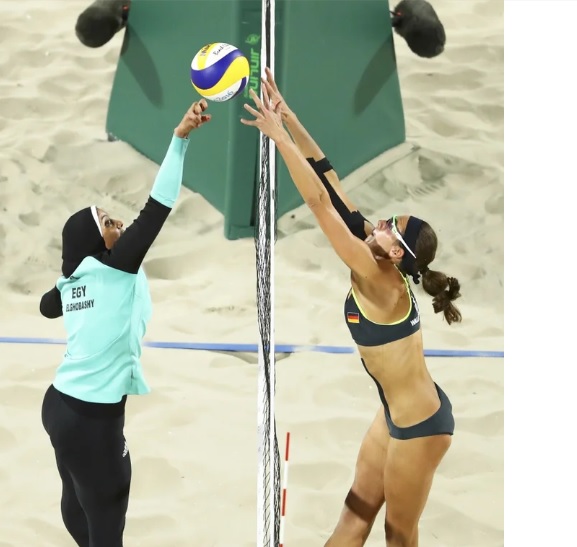
The good news was that ahead of the 2012 Olympics in London, organisers gave women more options for what to wear in beach volleyball. The change was meant to give more “flexibility” to countries with “religious and cultural requirements,” the International Volleyball Federation said at the time.
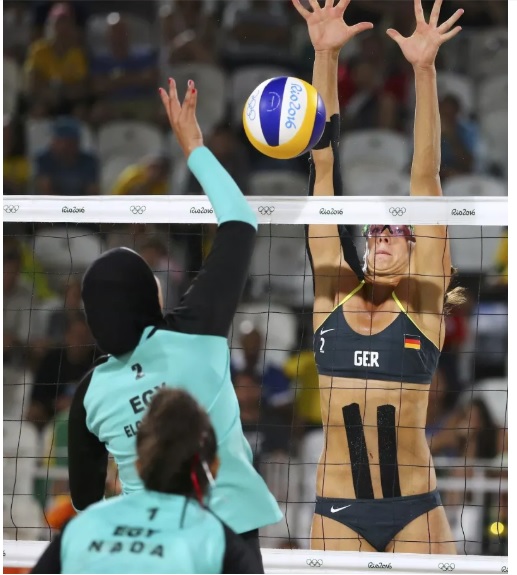
So why can’t Ghana relax the rules for female Muslims to enjoy their faith?
Recently, an invigilator of the West African Examination Council (WAEC) asked a candidate to remove her hijab before sitting her exams. This latest move sparked a recent social media campaign by Islam advocates dubbed: #Hijabisanidentity
They believe the successful campaign which culminated in a massive demonstration in some regions – North, Ashanti and Accra – will help shake up some traditionally-held cultural misconceptions about the female Muslim identity.
Thousands of Muslims from all walks of life took part in the demonstration to register their protest across the country. Sheikh Armiyawo Shaibu, the spokesperson for Ghana’s chief Imam, is quoted by the BBC to have said public officials who discriminate against Muslims must “suffer sanctions, adding: “The sanctions must be made public to send a message.”
They are pushing for a new law that would stop public officials from the blatant discrimination against women and girls who wear hijabs or headscarfs.

Ghana’s 1992 Constitution allows freedom of worship. Muslims and Christians have co-existed peacefully without any major clashes in recent time.
We wrap up this article with an excerpt from The Conversation outlining some five things everyone needs to know about the hijab. Maybe this will help reshape your mind if you’re not a Muslim:
1. Women are not forced to wear hijabs
Some women choose to wear the hijab because it is a national tradition of their country of origin, or because it is the norm in their local area, city or country. Others wear it to demonstrate their commitment to dressing modestly and for religious reasons. Like any item of clothing, some women wear the hijab for specific occasions, such as for family or community events, or during particular times of day but take it off at other times, such as wearing the hijab to and from school or work but taking it off while studying or working.
A very small minority may claim to be forced to wear the hijab. However, many studies show that in fact Muslim women choose to wear the hijab as a way of showing self-control, power and agency.
2. You’re not sexually oppressed
Many hijab wearers have said that they wear the veil not as a symbol of control by a man, but rather to promote their own feminist ideals. For many Muslim women, wearing a hijab offers a way for them to take control of their bodies and to claim a stance that challenges the ways in which women are marginalised by men.
Research has shown that for young Muslim women, wearing a hijab says little about the likelihood of them having a boyfriend or participating in a sexual relationship. Indeed, some young women have said they would wear the hijab to give them more space to engage in such activities.
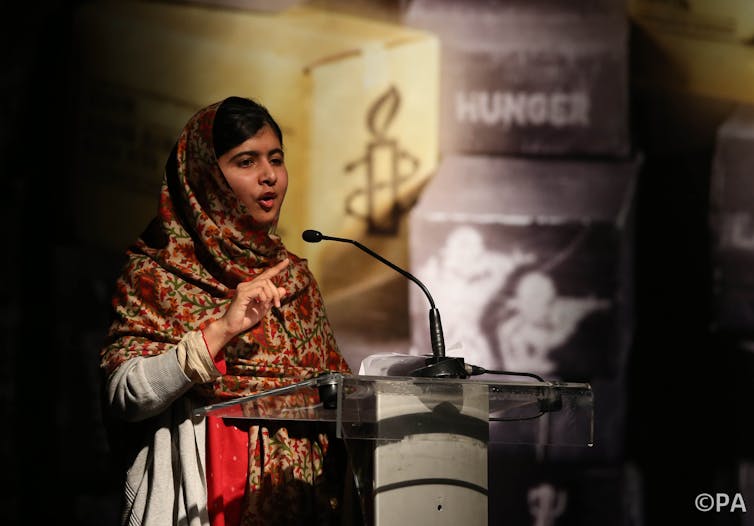
3. You’re not more likely to be linked to terrorism
Since 9/11, negative media coverage of Muslim communities, alongside government counter-terrorism policies in many Western countries, has further demonised Muslims. British research has shown that government policies have resulted in Muslims receiving unjustified attention in airport security, for example. They have also been shown to have created extra tensions and divisions between Muslim communities and the police.
For some hijab wearers, the hatred towards Muslim communities pushed them to stop wearing the veil after terrorist incidents, like the 7/7 London bombings, in order to minimise the chance of them experiencing racism. However, at the same time others started to wear the hijab to show their commitment to their religious faith. The hijab therefore cannot be a fixed symbol, but is far more flexible and changeable – and certainly cannot be deemed a marker of terrorism.
4. It’s not a ‘West versus rest’ division
There are many different styles, colours and shapes of hijab including different ways of wearing it. There is also a rising transnational Muslim fashion trade focusing particularly on younger women. In many respects, the hijab is similar to any other item of clothing with businesses marketing different styles and brands in order to maximise sales.
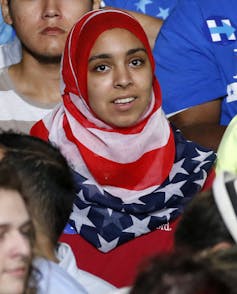
This global fashion trade transcends national and regional boundaries. It is about maximising the market rather than reinforcing divisions between the West and the Muslim “rest”. Rather than asking why a women is wearing a hijab to reinforce difference, we should ask what high street store or online retailer she purchased her clothing from and what attracted her to this brand. For some wearers, this is far more pertinent and telling of their personality.
5. The hijab is not something to be feared
A recently published report of anti-Muslim abuse in England found that more than 60% of victims are women, and 75% of these women were visibly Muslim so were likely to be wearing some form of head-covering. Women were also more likely than men to suffer anti-Muslim attacks on public transport or when shopping. The vast majority of the perpetrators in these incidents were white men, motivated by stereotypes. So rather than being feared, it’s more likely that women wearing hijab might fear others.
Muslim women wear the hijab for many different reasons all of which can change over time. This applies if the wearer is a community activist, an Olympic athlete like Elghobashy, a PhD student, a mother of young children or some or all of these. Any assumption that society attaches to the veil will never be right for each individual wearer, and it is for that very reason that we need to start changing the way we view it.
By K.N. S. Mensah, Daily Mail GH

